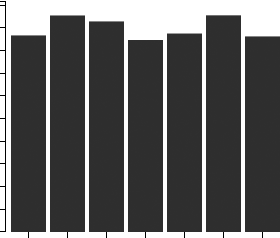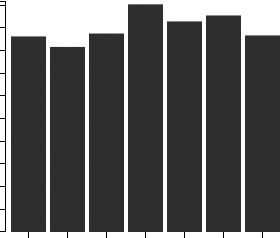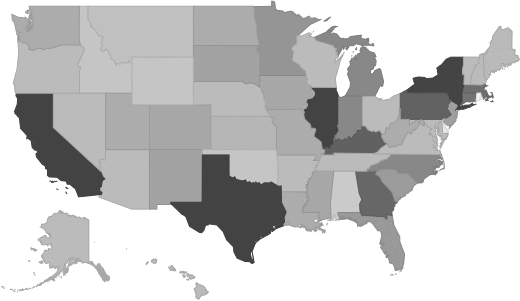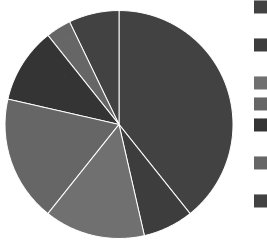Insurance Carriers Industry - Market Research Report
Industry Overview
This industry group comprises establishments primarily engaged in underwriting (assuming the risk, assigning premiums, and so forth) annuities and insurance policies and investing premiums to build up a portfolio of financial assets to be used against future claims. Direct insurance carriers are establishments that are primarily engaged in initially underwriting and assuming the risk of annuities and insurance policies. Reinsurance carriers are establishments that are primarily engaged in assuming all or part of the risk associated with an existing insurance policy (or set of policies) originally underwritten by another insurance carrier. Industries are defined in terms of the type of risk being insured against, such as death, loss of employment because of age or disability, and/or property damage. Contributions and premiums are set on the basis of actuarial calculations of probable payouts based on risk factors from experience tables and expected investment returns on reserves.
Source: U.S. Census BureauMarket Size and Industry Forecast
This research report analyzes the market size and trends in the Insurance Carriers industry. It shows overall market size from 2020 to the present, and predicts industry growth through 2030. Revenues data include both public and private companies.
| Historical | Forecasted |
|---|
| 2020 | 2021 | 2022 | 2023 | 2024 | 2025 | 2026 | 2027 | 2028 | 2029 | 2030 |
|---|
| Market Size (Total Revenue) | Included in Report |
| % Growth Rate |
| Number of Companies |
| Total Employees |
| Average Revenue per Company |
| Average Employees per Company |
Source: U.S. government financial dataIndustry Revenue ($ Billions)

Industry Forecast ($ Billions)

Advanced econometric models forecast five years of industry growth based on short- and long-term trend analysis. Market size includes revenue generated from all products and services sold within the industry.
Geographic Breakdown by U.S. State
Market size by state reveals local opportunity through the number of companies located in the region. Each state's growth rate is affected by regional economic conditions. Data by state can be used to pinpoint profitable and nonprofitable locations for Insurance Carriers companies in the United States.
Insurance Carriers Revenue by State

Distribution by Company Size
| Company Size | All Industries | Insurance Carriers |
|---|
| Small Business (< 5 Employees) | Included |
| Small Business (5 - 20) |
| Midsized Business (20 - 100) |
| Large Business (100 - 500) |
| Enterprise (> 500) |
Insurance Carriers Industry Income Statement (Average Financial Metrics)
Financial statement analysis determines averages for the following industry forces:
- Cost of goods sold
- Compensation of officers
- Salaries and wages
- Employee benefit programs
- Rent paid
- Advertising and marketing budgets
The report includes a traditional income statement from an "average" company (both public and private companies are included).
| Industry Average | Percent of Sales |
|---|
| Total Revenue | Included |
| Operating Revenue |
| Cost of Goods Sold (COGS) |
| Gross Profit |
| Operating Expenses |
| Operating Income |
| Non-Operating Income |
| Earnings Before Interest and Taxes (EBIT) |
| Interest Expense |
| Earnings Before Taxes |
| Income Tax |
| Net Profit |
Average Income Statement

Cost of Goods Sold
Salaries, Wages, and Benefits
Rent
Advertising
Depreciation and Amortization
Officer Compensation
Net Income
Financial Ratio Analysis
Financial ratios allow a company's performance to be compared against that of its peers.
| Financial Ratio | Industry Average |
|---|
| Profitability Ratios | Included |
| Profit Margin |
| ROE |
| ROA |
| Liquidity Ratios |
| Current Ratio |
| Quick Ratio |
| Activity Ratios |
| Average Collection Period |
| Asset Turnover Ratio |
| Receivables Turnover Ratio |
| Inventory Conversion Ratio |
Products and Services Mix
Product lines and services in the Insurance Carriers industry accounting for the largest revenue sources.
| Product Description | Description | Revenue
($ Millions) |
|---|
| Industry total | Included |
| Health and medical insurance products - premiums |
| Comprehensive medical service plans |
| Annuity products |
| Vehicle prop & liability (casualty) insurance products - premiums |
| Life insurance products - premiums |
| Personal vehicle insurance products - premiums |
| Property & liability (exc vehicle) insurance products - premiums |
| Indiv serv med cov plans (incl supp medicare, champus, & oth) |
| Variable deferred annuities |
Salary information for employees working in the Insurance Carriers industry.
| Title | Percent of Workforce | Bottom Quartile | Average (Median) Salary | Upper Quartile |
|---|
| Management Occupations | 9% | Included |
| Chief Executives | 0% |
| General and Operations Managers | 2% |
| Business and Financial Operations Occupations | 29% |
| Business Operations Specialists | 20% |
| Claims Adjusters, Appraisers, Examiners, and Investigators | 11% |
| Claims Adjusters, Examiners, and Investigators | 10% |
| Financial Specialists | 9% |
| Financial Analysts and Advisors | 6% |
| Insurance Underwriters | 7% |
| Computer and Mathematical Occupations | 12% |
| Computer Occupations | 10% |
| Healthcare Practitioners and Technical Occupations | 7% |
| Health Diagnosing and Treating Practitioners | 5% |
| Sales and Related Occupations | 9% |
| Sales Representatives, Services | 8% |
| Insurance Sales Agents | 7% |
| Insurance Sales Agents | 7% |
| Office and Administrative Support Occupations | 35% |
| Information and Record Clerks | 14% |
| Customer Service Representatives | 12% |
| Customer Service Representatives | 12% |
| Other Office and Administrative Support Workers | 13% |
| Insurance Claims and Policy Processing Clerks | 10% |
| Insurance Claims and Policy Processing Clerks | 10% |
Government Contracts
The federal government spent an annual total of
$1,408,647,098 on the insurance carriers industry. It has awarded 912 contracts to 108 companies, with an average value of $13,043,029 per company.
Top Companies in Insurance Carriers and Adjacent Industries
| Company | Address | Revenue
($ Millions) |
|---|
Included |



